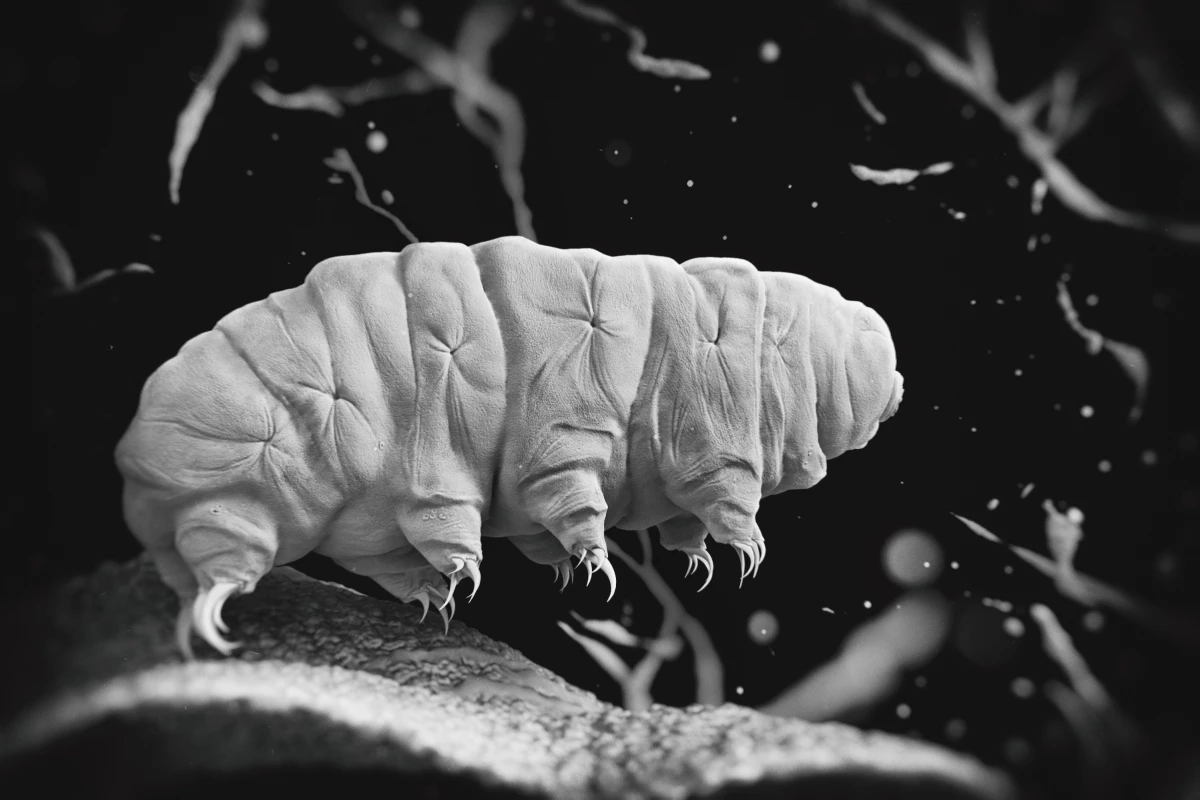It takes something truly extraordinary, like maybe the death of the Sun, to kill the near-indestructible invertebrate known as the tardigrade. Crash-landings on the Moon, a lack of oxygen and conditions in the darkest corners of the ocean don’t appear pose a threat to this critter’s livelihood. Scientists studying these so-called water bears have uncovered a neat trick they employ to endure inhospitable conditions, using a unique protein to generate protective clouds around their DNA.
Tardigrades measure no more than a millimeter long, but possess an indomitability that would make even nature’s largest and hardiest creatures jealous. Key to their survival is an ability to enter a suspended and extremely dehydrated state of being called anhydrobiosis, in which their metabolism is put on hold until the surrounding conditions are more favorable to a regular life.
This capability has seen tardigrades endure temperatures as high as 150º C (302º F) and as low as -272º C (-457.6º F). It has seen them studied in the vacuum of space and exist amongst intense pressures at the bottom of the ocean. When an Israeli spacecraft carrying tardigrades crash-landed on the Moon in August, it inspired some dramatic headlines around the possibility of the near-indestructible creatures colonizing Earth’s only natural satellite.
Another trait possessed by the tardigrade is an ability to withstand levels of radiation that would be dangerous to the DNA of regular beings. In a 2016 study, scientists uncovered a reason for this finding that tardigrades, and only tardigrades, possess a unique protein called a Dsup (damage suppressor), which greatly improves the resistance of their DNA to ionizing radiation that could otherwise cause mutations. Adding Dsup to human cells in culture bestowed them with a similar resistance.
Now scientists at the University of California (UC) San Diego have probed the mechanics behind this a little further. Using a range of advanced biochemical techniques, the team was able to tease out some interesting insights about how tardigrades enter survival mode.
The Dsup protein was found to bind to a mish-mash of protein and DNA material inside the cells called chromatin. Once mated to the chromatin, the two combine to generate a protective cloud that repels what are known as hydroxyl radicals. These particles are produced when ionizing radiation, such as an X-ray, encounters water molecules, and generally speaking cause damage to DNA inside cells. But not if they can’t get to it, they don’t.
“We now have a molecular explanation for how Dsup protects cells from X-ray irradiation,” says Kadonaga, a distinguished professor and the Amylin Endowed Chair in Lifesciences Education and Research. “We see that it has two parts, one piece that binds to chromatin and the rest of it forming a kind of cloud that protects the DNA from hydroxyl radicals.”
The scientists don't believe that tardigrades developed this ability in response to the dangers of radiation. Hydroxyl radicals can occur through other means, including when a moist, mossy habitat a tardigrade might typically call home begins to dry out. When this occurs the tardigrades enter anhydrobiosis as a means of survival.
These findings do more than just shed light on one of nature’s most fascinating creatures, it could have useful ramifications in the world of biotechnology. The scientists imagine leveraging this new knowledge to develop more durable cells that can survive all kinds of environments.
“In theory, it seems possible that optimized versions of Dsup could be designed for the protection of DNA in many different types of cells,” says Kadonaga. “Dsup might thus be used in a range of applications, such as cell-based therapies and diagnostic kits in which increased cell survival is beneficial.”
The researchers have published a study in the journal eLife.
Source: UC San Diego




